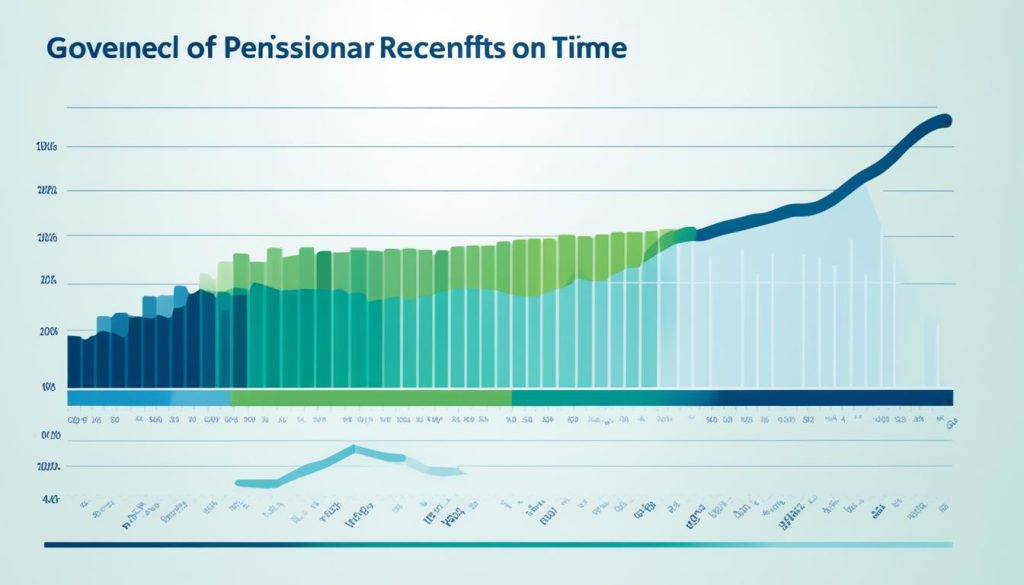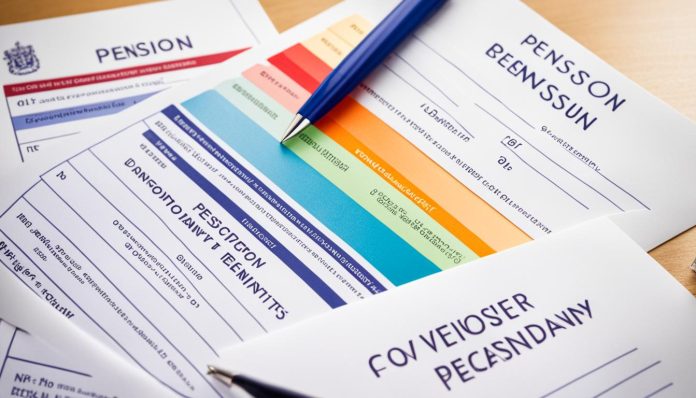Table of Contents
For many individuals approaching retirement, understanding the intricacies of the UK government pension can be a daunting task. With changes implemented on 6 April 2016, it’s crucial to grasp the new regulations to ensure you are maximising your retirement benefits. This guide is tailored to provide clarity on the post-2016 State Pension system, helping you to construct a solid foundation for your retirement planning.
The State Pension is one of the pillars of retirement income in the UK, offering a steady weekly income to those who have reached the qualifying age. The amount you receive hinges on your unique National Insurance record, reflecting your contributions throughout your working life. As the fiscal year 2023 to 2024 sets in, the full new State Pension stands at £203.85 per week, though this figure may vary subject to specific factors in your work history, such as career breaks or periods spent caring for others.
Navigating through the government pension in the UK doesn’t have to be perplexing. With this guide, we aspire to demystify the process, assist in mapping out your contributions, and offer insight into how you can secure and potentially increase your retirement income. Stay tuned as we delve into the workings of the UK Government Pension and how you can take steps towards maximising your retirement benefits efficiently.
Understanding the UK Government Pension System

To secure a financial foothold in retirement, gaining a comprehensive understanding of the government pension UK framework is essential. The foundation of this system is the State Pension, a benefit aimed at providing retired individuals with a reliable source of income. Those who entered the workforce after 6 April 2016 need to have contributed to their National Insurance record for at least 35 years to qualify for the full new State Pension.
The pension amount you receive is not static; rather, it’s calculated based on your National Insurance contributions history. To maximise your pension benefits, it’s pivotal to pay close attention to your contribution years – both prior and after 5 April 2016. For years added to your record post this date, each qualifying year can potentially enhance your weekly pension payout by approximately £5.82.
If your pension contributions pre-2016 were substantial enough to exceed the full rate of the new State Pension, don’t fret. You are entitled to a ‘protected payment’ that tops up your pension amount. That said, how can you ascertain what amount you’re due to receive upon retirement? That’s where a State Pension forecast becomes invaluable.
For prospective pensioners aiming to scrutinise their expected income, acquiring a personalised State Pension forecast is a straightforward process. Available online, this forecast can offer you a clear projection of the pension awaiting you. It takes into account your contributions and benchmarks them against qualifying years, thereby demystifying what you can anticipate when you enter your non-working years. Building an accurate picture of your pension outlook aids in retirement planning and ensures that there are no surprises when you transition from earning an income to depending on pension benefits.
- Minimum of 35 qualifying years for the full new State Pension.
- Opportunity to increase pension through additional qualifying years.
- Protected payment entitlement for contributions exceeding the full rate.
- Accessibility of an online State Pension forecast.
Remember, preparing for retirement should begin as early as possible. Regularly reviewing your National Insurance record and making sure you understand how each qualifying year affects your future pension can lead to a more comfortable and secure retirement.

Navigating Your National Insurance Record and Its Impact on Your Pension
The pathway to secured retirement planning in the UK intricately involves understanding UK government pension eligibility which notably hinges on one’s National Insurance record. With the aim to increase retirement income, individuals must be cognizant of their entitlements, contributions, and how these correlate to claiming UK State Pension benefits.
Eligibility Criteria for Receiving State Pension
To commence your journey towards a government pension in the UK, securing at least 10 qualifying years on your National Insurance record is mandatory for any pension accrual. This requirement ensures a minimum level of contributions, facilitating a measure of financial security in retirement. However, eligibility extends beyond simple chronological contributions; various sources of income and activities relate to these qualifying years, offering flexibility in meeting these critical conditions.
Contributing to Your National Insurance: Employment and Self-Employment
When it comes to regular income, specific thresholds determine National Insurance contributions, with earnings over £242 a week resulting in automatic deductions. For the self-employed, Class 2 National Insurance contributions stand as a statutory mechanism to ensure consistent addition to the qualifying years. Significantly, reaching State Pension age brings exemption from further contributions, irrespective of ongoing employment, exemplifying the government’s approach to retirement planning.
Accruing Qualifying Years: Earnings, Credits, and Voluntary Contributions
National Insurance credits emerge as a valuable element for those with varied earnings or undertaking activities such as caring. Programs like Child Benefit play an elemental role in attributing credits, vital for parents and carers alike. Acknowledging the diversity of modern work and life arrangements, the UK’s pension system provides avenues to earn qualifying years, accommodating different personal circumstances and bolstering one’s potential retirement income.
Understanding Protected Payments and ‘Starting Amounts’
The concept of protected payments is particularly pertinent for those who, under previous regimes, would have received a UK State Pension above the current full rate, primarily due to Additional State Pension contributions. The ‘starting amount’ furthers the endeavour to balance transitional arrangements by considering an individual’s entire contribution history, projected through the new system’s lens. The careful calibration of these elements underscores the UK’s commitment to fair and progressive pension provision, assuring a retirement grounded in equity and continuity.

